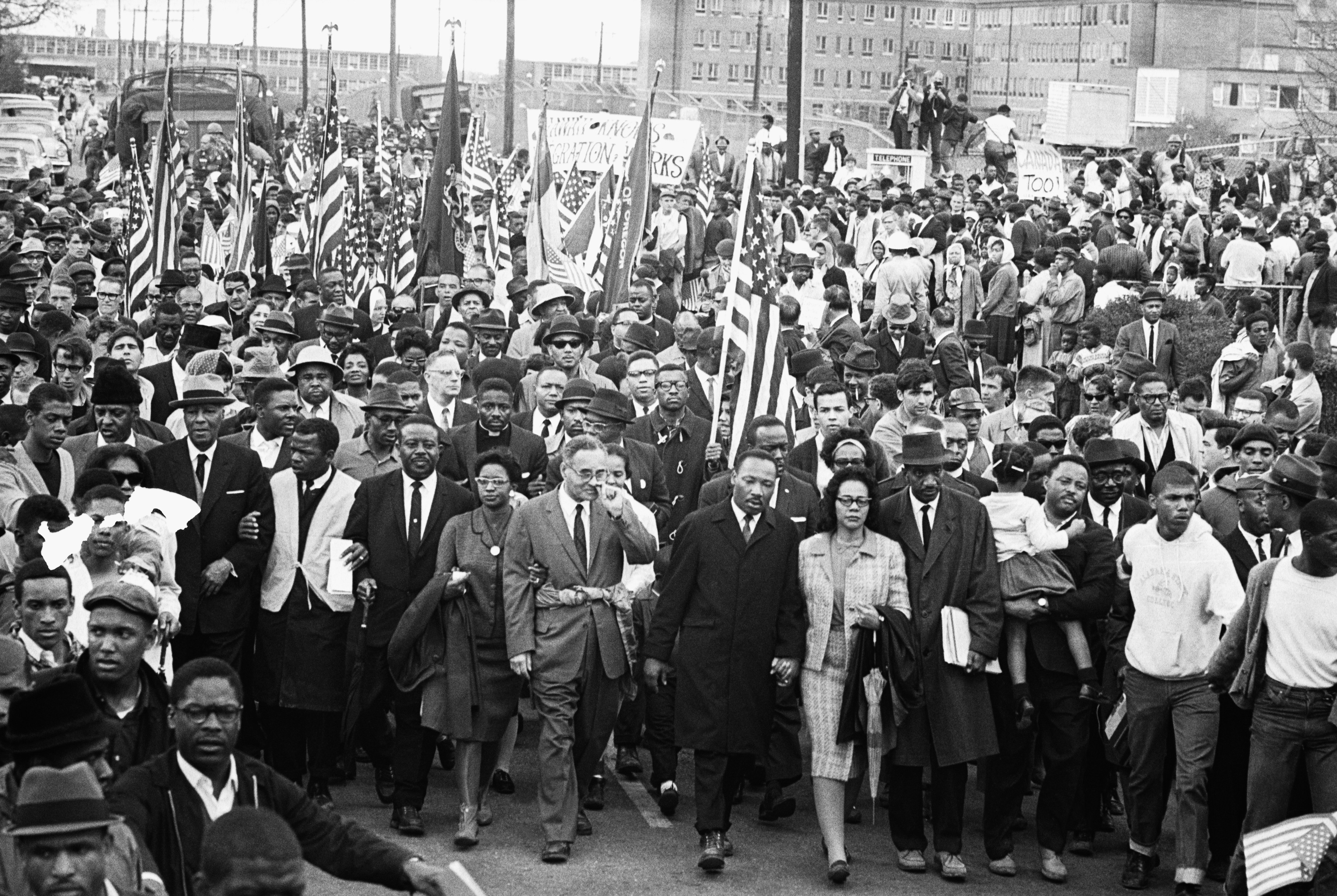The March
In January 1965, after years of voting rights activism, Martin Luther King, Jr. and the Southern Christian Leadership Conference (SCLC) made Selma, Alabama the focus of the organization’s efforts to push for federal voting rights legislation. Selma reflected the systematic disfranchisement of black people throughout the South beginning in the late nineteenth and early twentieth centuries. For example, one percent of eligible blacks were registered to vote in 1960. Locally, the Dallas County Voters League along with other local and state organizations had been working to increase black voting participation in Selma since the 1920s. The Student Nonviolent Coordinating Committee (SNCC) brought much needed reinforcements to the local efforts in 1963.
The turning point was March 7, 1965, known as “Bloody Sunday,” when protesters attempting to march from Selma to the state capital of Montgomery were met with violent resistance by state and local authorities while crossing the Edmund Pettus Bridge, located on the outskirts of the city. The original goal of the march was to deposit the body of twenty-six year old Jimmie Lee Jackson at the steps of the state capitol building before the governor of the state of Alabama. Jackson had been shot by Alabama State Troopers during a voting rights demonstration in downtown Marion, Alabama on February 18, 1965 dying ten days later. Federal Judge Frank M. Johnson issued an injunction halting the march until hearings could determine whether the march should take place.
During a two week delay, between “Bloody Sunday” and the actual march to the state capitol, thousands of students from around the nation joined SNCC and students from Alabama State University and Tuskegee University in a series of voting rights demonstrations. Almost daily, the students marched on Montgomery City Hall, the Montgomery County Courthouse, and the Alabama State Capitol building. At the same time, students across the nation participated in sympathy demonstrations in support of the voting rights campaign in Alabama. On March 17, Judge Johnson lifted the federal injunction, authorizing the Selma-to-Montgomery March.
As the world watched, voting rights activists left Selma on March 21 for a fifty-four mile, five day trek ending at the state capitol building on March 25. Twenty-five thousand marchers heard from civil rights activists and leaders throughout the day. The march culminated with King’s famous “Our God is Marching On” speech. The 1965 Selma-to-Montgomery March and the larger voting rights campaign in Alabama helped raise national awareness of the need for voting rights legislation. On August 6, 1965, President Lyndon B. Johnson signed the Voting Rights Act, eliminating major obstacles to voting in the nation.


